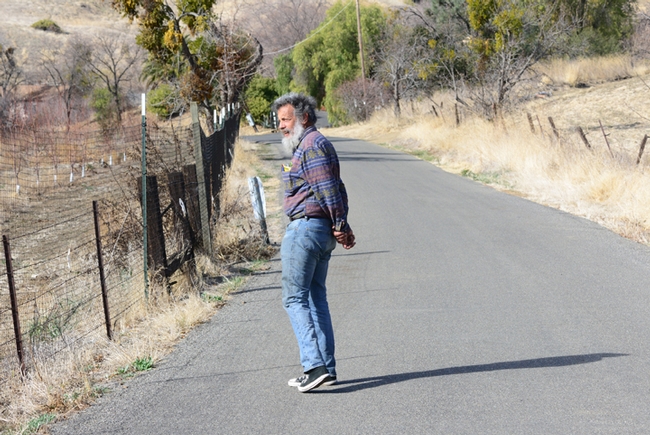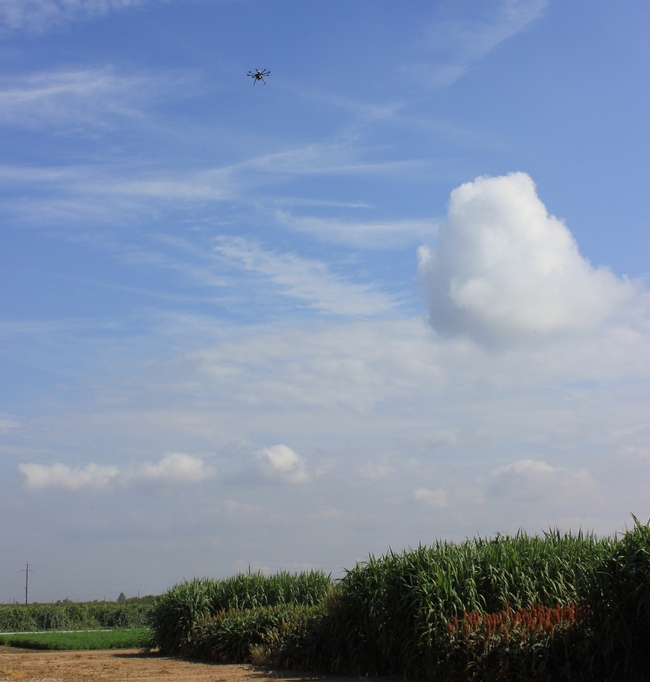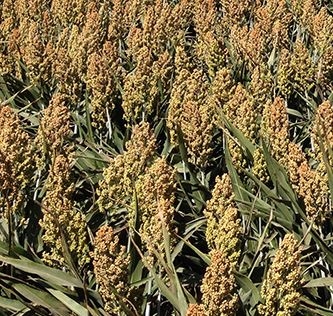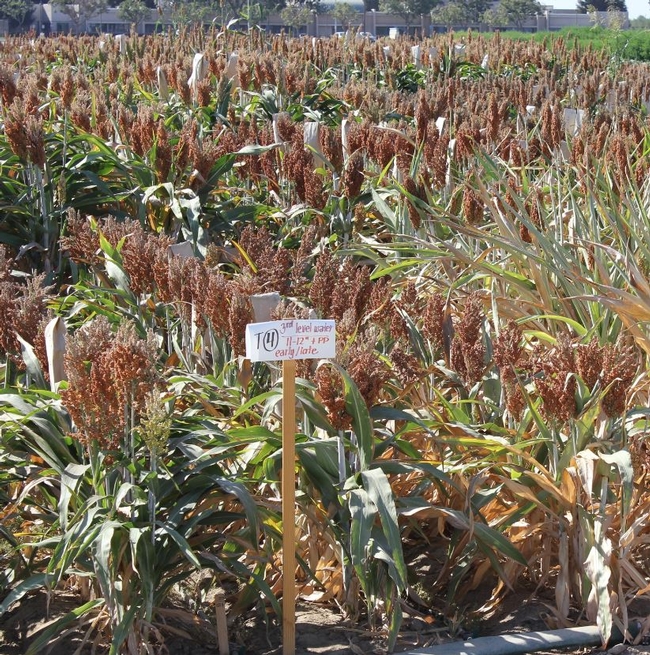Posts Tagged: drought
What Effect Did the California Drought Have on Butterflies?
Remember the California drought of 2011 to 2015? What effect did that have on butterflies? Newly...

Art Shapiro, UC Davis distinguished professor of evolution and ecology, counting butterflies in Gates Canyon, Vacaville, on Jan. 26, 2014. (Photo by Kathy Keatley Garvey)
Drones are used for research and land management; do you want to learn how to use drones?
Jeffery Dahlberg, director of UC ANR Kearney Agricultural Research & Extension Center (KARE), specializing in plant breeding and genetics, is working with drones to collect data for one of his sorghum programs. Work will continue the development of field scale drought nurseries at both KARE and West Side Research & Extension Center (WSREC) under a DOE ARPA-e funded project that utilizes drone technology to phenotype sorghum lines on a weekly basis as they are stressed under pre- and post-flowering drought stress. Research will continue this coming summer to gather additional phenotypic data, along with heat stress measurements and soil moisture monitoring. These nurseries are part of an effort to identify genes that are expressed under different field stress conditions and relate them to sorghum's ability to withstand and recover from stress.
If you are interested in learning how to use drones for research and land management, you may want to explore attending the UCANR Informatics and GIS Program's Dronecamp July 25-27, 2017 at UCANR in Davis, Calif., the application period is March 1 – April 15, 2017. Dronecamp costs $500 for UC affiliates (UC employees and enrolled students), and $900 for non-UC participants. Dronecomp is designed for participants with little or no experience in drone technology, and want to learn how to use drones for mapping applications. The intensive workshop covers drone science; safety and regulations; mission planning; flight operations; data processing; data analysis; visualization; and the latest trends and technology. Read more.

The October 30 issue of the Sacramento Bee op-ed included an article on soil health by Jeff Mitchell and Randy Southard.
An Op-Ed article written by Jeff Mitchell, CE Cropping Systems Specialist in vegetable cropping systems, irrigation management, soil quality, organic soil amendments, extension models, and postharvest physiology in the Department of Land, Air and Water Resources at UC Davis and at UC ANR Kearney Agricultural Research and Extension Center and Randy Southard, Professor and Soil Genesis/Morphologist in the Department of Land, Air and Water Resources at UC Davis was included in the October 30 issue of the Sacramento Bee. More information on conservation tillage practices can be found on the Conservation Agriculture Systems Innovation (CASI) website.

2015 garbanzo harvest in July at Five Points, CA.
Sorghum research at the UC Agriculture and Natural Resources Research & Extension Centers available to the public.
If you are interested in getting information regarding research on the use of sorghum as a multi-purpose low-input crop for California, please go to this link. Under the research link, there are some videos showing the harvest of experimental plots as well as the use of a drone to perform rapid, robotic phenotyping of sorghum for character traits such as plant height, leaf area, and biomass area--data points used to help search for genes that control mechanisms involved in both drought tolerance and salinity tolerance in sorghum. Research is currently being performed at Kearney Agricultural Research and Extension Center, Desert Research and Extension Center, and West Side Research and Extension Center.

Photograph of sorghum plants.
Kearney sorghum research seeks to understand how the crop is able to survive water deprivation.
Kearney is participating in a $12.3M study of crop drought tolerance funded by the US Department of Energy. The five-year project is called Epigenetic Control of Drought Response in Sorghum, or EPICON. Peggy Lemaux, cooperative extension specialist at UC Berkeley's Department of Plant and Microbial Biology, is heading the entire project. Co-investigators are Devin Coleman-Derr, Elizabeth Purdom and John Taylor from UC Berkeley; Jeffrey Dahlberg and Robert Hutmacher from UC Agriculture and Natural Resources; Chia-Lin Wei from the DOE Joint Genome Institute; and Christer Jansson from the Pacific Northwest National Laboratory.
Sorghum will be studied to explore the epigenetic mechanisms that allow a crop to survive drought conditions. Epigenetic modifications turn genes on or off without modifying the DNA sequence.
“Historically, the genetic manipulation of crops, which has been critical to increasing agricultural productivity, has concentrated on altering the plant's genetic sequence, encoded in its DNA,” said Lemaux. “However, recent studies have shown that environmental stresses – in our case drought – can lead to epigenetic changes in a plant's genetic information. Because epigenetic changes occur without altering the underlying DNA sequence, they allow plants to respond to a changing environment more quickly.”
For The Daily Californian article, please click here.

Sorghum being tested for epigenetic control of drought response at Kearney.